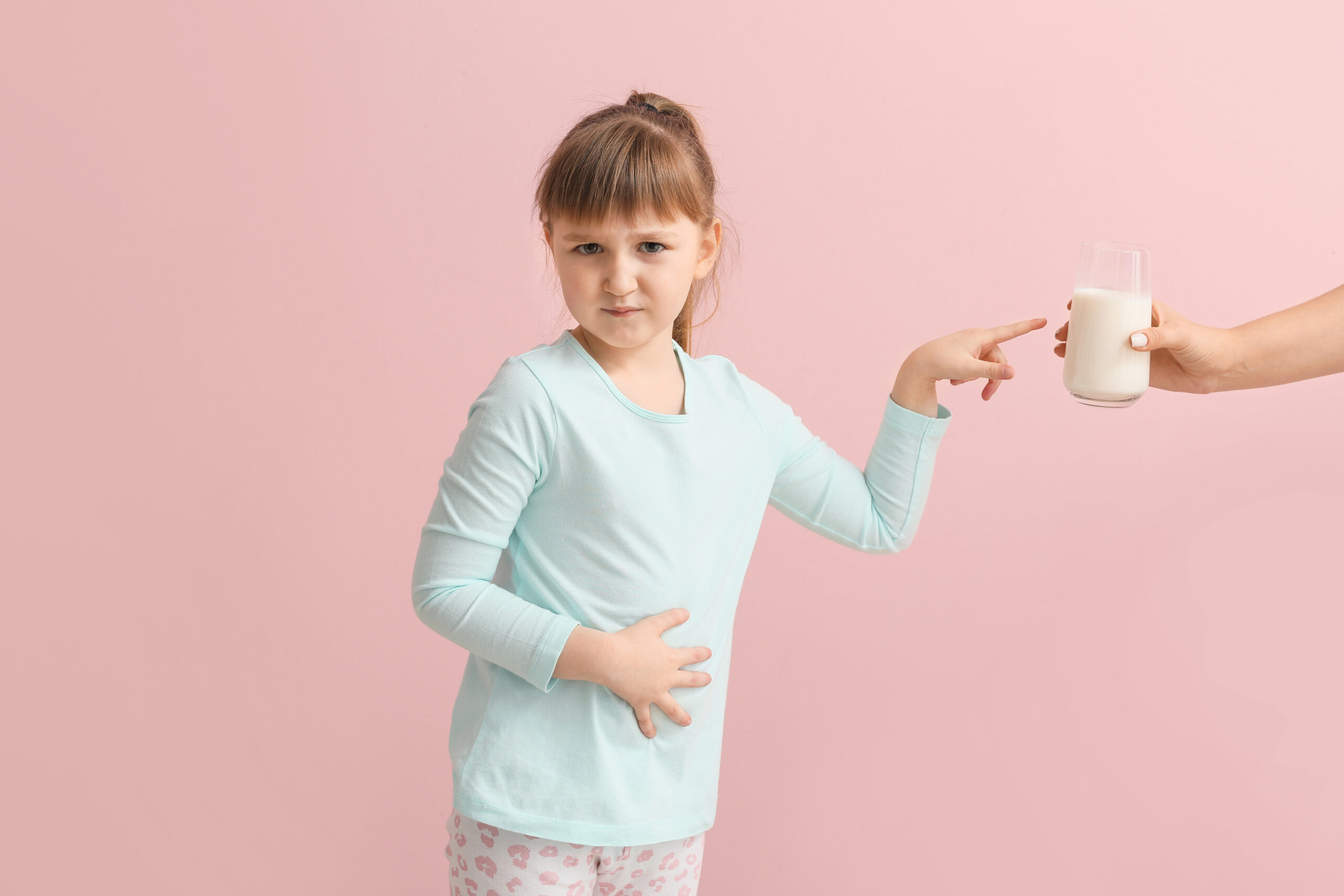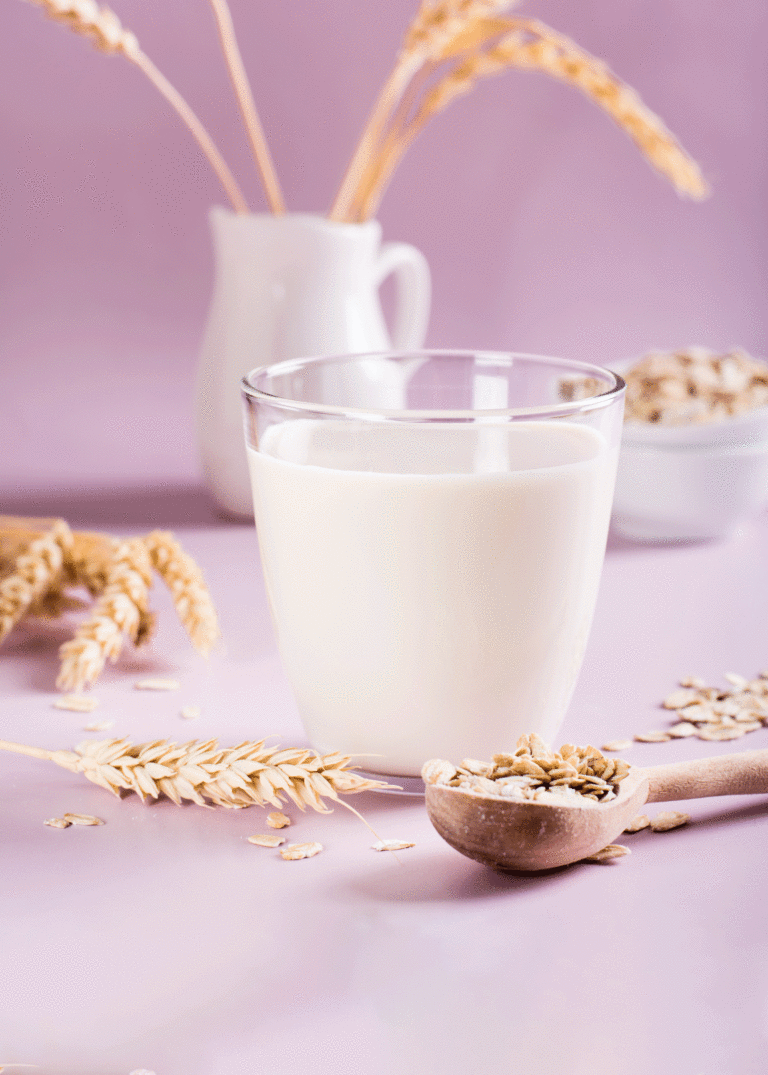Decoding Most Common Food Allergies in Children
This post may contain affiliate links. Read our disclosure policy.
The content provided on FoodAllergiesLiving.com is for educational purposes only. The information supplied on this website is not intended to diagnose, treat, cure, or prevent any disease, nor is it intended to replace the advice of a physician.
Are you suspecting that your child has a food allergy? Discover children’s most common food allergies and what steps to take next.

The 3 Most Common Food Allergies in Children
Around 5.6 million children in the US suffer from food allergies, and the numbers have been increasing over the last 20 years. While there is a long list of potential allergens, 90% of food allergies in children are caused by a handful of common foods.
Milk, eggs, and peanuts are children’s most common causes of food allergies, However, there are many more, such as wheat, soy, tree nuts, fish, and selfish.
Milk
Up to 3 of every 100 children who are younger than 3 years of age are allergic to milk- cow’s milk in specific. However, a milk allergy can affect anyone of any age, but it’s more common in children under 16.
There are two main types of protein in milk that might cause your immune system to overreact. You may be allergic to one or both of the proteins.
- Casein. The “solid” part of milk (curd). It accounts for about 80% of the protein in milk, and it gives milk its white color.
- Whey. The “liquid” part of milk when it curdles. It accounts for 20% of the protein in milk.
If you notice your child vomiting soon after a feed, crying incessantly, or acting gassy or colicky, it could possibly be a manifestation of a milk allergy. Some severe symptoms that clearly point out milk allergy include hives, rashes, or breathing difficulty.
Unfortunately, there’s no sure way to prevent a food allergy, but you can prevent reactions by avoiding the food that causes them. In this case, avoiding milk and milk products is the primary treatment for milk allergy. Fortunately, most children outgrow milk allergy by the age of 16.
If you suspect a milk allergy, it’s very important that you see a healthcare provider immediately. Also, avoid products that contain milk protein. It’s very important that you read labels every time. Milk proteins are found in many foods, including all dairy products, and in many other products where they might not be expected, such as canned tuna, sausage, and meats, which often can contain casein.
For more details about a milk allergy, visit my Milk Allergy- Everything You Need To Know post.
Eggs
Eggs are one of the most common food allergens. Experts estimate that as many as 2 percent of children are allergic to eggs. Fortunately, studies show that about 70 percent of children with an egg allergy will outgrow the condition by age 16.
Symptoms of egg allergy in children range from mild stomach pains and diarrhea to skin inflammation or hives to anaphylaxis, a life-threatening condition that impairs breathing and can send the body into shock. The symptoms can appear within a short period of time after eating (or even touching or smelling) eggs.
The best way to manage an egg allergy is to avoid eating eggs. Unfortunately, eggs are a hidden ingredient in many foods, such as ice cream, salad dressings, canned soups, cheeses (parmesan), pasta, etc. So it’s super important that you double-check and read the labels on foods.
If you suspect an egg allergy, it’s very important that you see a healthcare provider immediately. Your allergist may diagnose an egg allergy through a skin-prick test and/or a blood test. Also, avoid products that contain eggs by reading food labels every time.
For more details about an egg allergy, visit Egg Allergy – Everything You Need To Know.
Peanuts
Peanut allergy is one of the most common food allergies. About 1 in 50 children in the U.S. S have a peanut allergy. It occurs when your body mistakenly identifies peanuts as a harmful substance and overreacts.
Peanut allergies are a growing concern among parents of children due to the severity and life-threatening consequences of accidental peanut ingestion, since it’s one of the most common causes of anaphylactic shock, requiring immediate access to epinephrine and other medical treatments to avoid potentially fatal outcomes.
An allergic reaction to peanuts may show up in the form of hives and swelling, vomiting, diarrhea, redness of the eyes, shortness of breath, and wheezing.
If you suspect that you or your child has a peanut allergy, see a healthcare provider immediately. Also, you need to pay close attention to what you eat and avoid products that contain peanuts by reading food labels.
For more details about a peanut allergy, visit Peanut Allergy – Everything you need to know.
Signs and Symptoms of Food Allergies in Children
Food allergies in children are often mistaken for normal childhood illnesses. Some of their symptoms- particularly skin rashes, digestive issues, and coughing often coincide with the symptoms of other health issues.
Some other severe symptoms of a food allergy may include belly pain, hives, wheezing, breathing difficulty, vomiting, and swelling in different parts of the body.
This is exactly why it is incredibly important to remain vigilant and pay attention to your child’s well-being if you suspect they have a food allergy.
I’m not sure my kid has a food allergy…what do I do next?
Keeping your child safe from food allergies can seem confusing and daunting, but it doesn’t have to be.
- Start by talking to your child’s pediatrician about your concerns. The doctor will likely order a number of diagnostic tests.
- Keep a journal. Write down everything your child eats and if he/she developed any reaction after consuming certain foods.
- Avoid any major allergen until your child has been diagnosed.
- Make sure everyone in the house and all caregivers, including babysitters and teachers, are notified about the food your kid’s food restrictions. This way, they can prevent your child from accidentally coming in contact with any potential allergen.
- When eating out or attending social events, you may want to carry along some safe snacks for your child, just in case.
- At home, make it a point to use a separate cutting board and utensils when prepping meals to reduce the risk of cross-contamination.
- Make sure you read the nutrition labels on all the packaged food products you purchase, so you are aware of any potential allergens in them.
- If you’re breastfeeding, avoid any major allergen.
- Lastly, If your child is old enough to understand, educate them about what food he/she needs to avoid.







